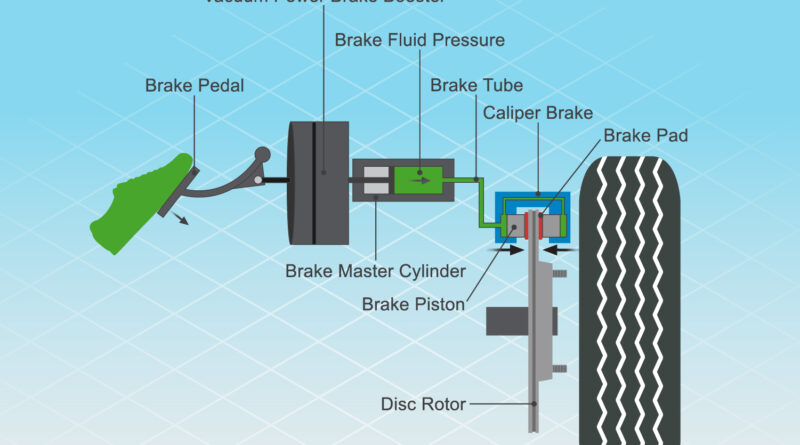How Car Brakes Work disc and drum brakes
This article explores the intricate how car brakes work, shedding light on the mechanisms and technologies that contribute to their efficiency and reliability. Brakes are a fundamental safety feature in any vehicle, providing the driver with the ability to control speed, decelerate, and bring the vehicle to a complete stop.
- Brake System Components:
- Brake Pedal: The driver applies force to the brake pedal to initiate the braking process.
- Master Cylinder: Converts the force from the brake pedal into hydraulic pressure.
- Brake Lines: Transmit the hydraulic pressure from the master cylinder to the brake calipers. How to check brake pads.
- Types of Braking Systems:
- Disc Brakes: Utilize brake discs (rotors) and calipers with brake pads. Common in modern vehicles for their efficient heat dissipation.
- Drum Brakes: Feature brake drums and brake shoes. Found in some rear-wheel-drive vehicles and older models.
- Disc Brake Mechanism:
- Brake Caliper: Contains pistons that squeeze the brake pads against the rotating disc.
- Brake Pads: Friction material that makes contact with the brake disc, generating the necessary stopping force.
- Brake Disc (Rotor): The rotating component on the wheel hub that experiences friction from the brake pads.
- Drum Brake Mechanism:
- Brake Drum: Rotates with the wheel and is attached to the wheel hub.
- Brake Shoes: Situated inside the brake drum, these shoes are forced against the drum’s inner surface to create friction.
- Hydraulic System:
- Master Cylinder: Converts mechanical force from the brake pedal into hydraulic pressure.
- Brake Fluid: Transmits hydraulic pressure through the brake lines to the calipers or wheel cylinders.
- Anti-lock Braking System (ABS):
- ABS Sensors: Monitor the speed of each wheel.
- ABS Controller: Modulates brake pressure to prevent wheel lockup during hard braking, enhancing steering control.
- Regenerative Braking (Electric Vehicles):
- Electric Motor: Acts as a generator during deceleration, converting kinetic energy back into electrical energy.
- Energy Storage: Captures and stores the generated electrical energy, often in a battery.
- Brake Maintenance and Wear:
- Regular inspection of brake pads, discs, and drums is essential.
- Unusual noises, reduced braking performance, or vibrations may indicate brake issues.
- Brake fluid levels and condition should be routinely checked and replaced as needed.
- Emergency Braking Systems:
- Emergency Brake Assist (EBA): Enhances braking force during emergency situations.
- Collision Avoidance Systems: Use sensors to detect potential collisions and may automatically engage the brakes.
Conclusion: Understanding how car brakes work is paramount for safe and effective driving. From traditional hydraulic systems to advanced technologies like ABS and regenerative braking, the evolution of brake systems continues to prioritize driver and passenger safety. Regular maintenance, prompt attention to warning signs, and staying informed about braking technologies contribute to a vehicle’s overall safety and performance.
Buying a used VW. Buying used vauxhall, BMW, Jaguar, Ford, Volvo, Range rover, Bentley, Aston Martin, Porsche, Ferrari, Lamborghini, Maserati, Hyundai, Tesla

